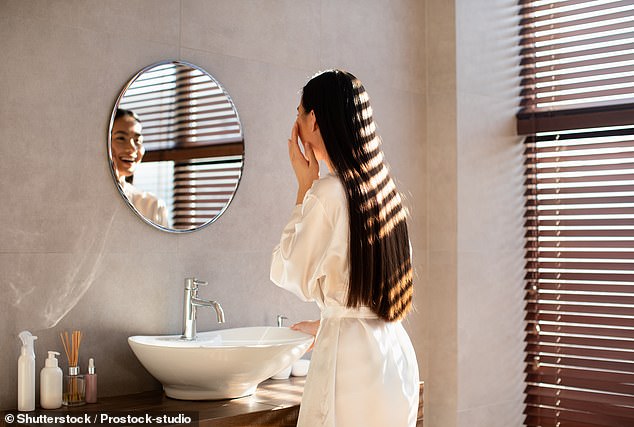Have you been going to the toilet WRONG? Pelvic floor specialist reveals the unusual noise you should make on the loo to tackle constipation
A pelvic floor specialist has revealed how women should go to the toilet properly to avoid health problems from constipation to hemorrhoids.
Heather Foord, a specialist at Core Restore Co, believes that toilet conversations should be anything but taboo and has helped thousands of people educate and treat people with pelvic floor and core problems.
Pelvic floor problems can lead to poor bowel movements, chronic constipation and excessive urges to go to the toilet. Everyone has experienced it at some point.
“It only takes a few minutes to go to the bathroom,” she said.
‘If you sit on the toilet for more than five minutes, you are at greater risk of anal fissures and hemorrhoids, which are swollen veins in the rectum and anus that can cause pain, itching and general discomfort.’
Mrs Foord explains: ‘Sitting and pushing for long periods of time increases the pressure in your abdomen and this can restrict the flow of blood from the anus to the heart.
‘When this happens, the small blood vessels and veins in your anus can swell with blood and develop into grape-like lumps.’
Heather Foord from the Core Restore Co-clinic told FEMAIL that most people don’t know how to go to the toilet the ‘right’ way
Do you need a toilet stool?
The specialist also indicated that everyone should invest in a toilet stool.
“Who would have thought that all those years of dancing on the dance floor were just an exercise to give your body the figure of your dreams?” she joked.
‘The optimal position to poop is with your knees up in a deep squat position. That’s why investing in a toilet stool that keeps your knees up is a real game changer.
This position helps you relax the puborectalis muscle, which is located around the junction of the anal canal and rectum.
“Think of it like a poop traffic light. When it’s on and tight, it’s a red light that bends the intersection to stop leakage. When it’s relaxed (or a green light), it straightens up and helps you empty your bowels properly.”
How do I deal with constipation?
Mrs Foord shockingly revealed that ‘mooing’ like a cow can help relieve constipation.
‘Begin by inhaling deeply, allowing your belly to relax and expand. As you exhale, allow your belly to relax again.
‘Repeat this breath (with the belly expanding as you inhale) five times. Now make an “Mmmmm” sound. This action helps your waist widen and creates pressure to help with bowel movements.
‘Expand your belly (really let it go) by saying the “Ooooo” sound. This will help your anal sphincter open. Keep going with the “Mmmm” and “Oooo” to keep generating pressure.’

A pelvic floor specialist has revealed five ways every woman can get more out of her toilet visits – and a health tip that could keep hemorrhoids at bay for good
What is the correct way to use toilet paper?
The professional discovered that most people use toilet paper incorrectly.
Mrs Foord advises replacing toilet paper with a bidet altogether, as these devices are more environmentally friendly and hygienic.
“Take it easy on the back door and use toilet paper sparingly or not at all,” she said.
“First, when using toilet paper, try not to wipe aggressively; try to blot gently. If you have to wipe more than three times, fecal smear may be building up due to anal sphincter weakness, hemorrhoids, or anal scar tissue.”
What is ‘splinting’ and how can it help with constipation?
Ms Foord revealed a ‘baffling’ practice called vaginal splinting, which is intended to help with constipation.
‘Splinting involves inserting a clean finger into your vagina to help push on the wall between the vagina and the rectum (also known as the perineum). This pushes the poop out!
“While splints are often recommended for prolapse, they are safe to use when removing an anal guest that has stayed in too long. Just make sure you don’t have any broken skin or irritation that would make it painful or increase the chance of an infection in the vagina.”
What should I do when I have finished using the toilet?
Mrs Foord explained that you should always pull your pelvic floor muscles ‘inwards’ after going to the toilet.
“This puts the anus back into the correct position and closes it off so there is no anal leakage or lubrication,” she said.
